Special Report
All of the Weapons the US Has Committed to Ukraine Since the Invasion

Published:

The U.S. Department of Defense recently announced an additional $1.1 billion in aid and military equipment to Ukraine amid the ongoing Russian aggression. On top of funding for training and equipment maintenance, the new package includes 150 Humvees, over a dozen advanced rocket systems, and a range of military radar equipment.
The U.S. announced its latest commitment as continued setbacks for Russian forces on the ground are escalating tensions in Moscow. Only a week prior, Russian President Vladimir Putin ordered a partial troop mobilization, effectively calling up reservists into active duty and boosting weapons production. And within days of the Pentagon’s latest pledge, Putin raised the specter of nuclear war in a speech to the Russian parliament. (Here is a look at the 20 biggest bombs in Russia’s nuclear arsenal.)
Since the beginning of the year, the U.S. has committed to supplying a total of $16.9 billion in military aid to Ukraine, delivering everything from small arms and medical supplies to helicopters, drones, and heavy artillery. These weapons, in addition to aid packages delivered by other allied nations, have proved instrumental to the success of Ukrainian forces so far.
To identify the military equipment sent to Ukraine since the start of the Russian invasion, 24/7 Wall St. reviewed the DOD’s Sept. 28, 2022 Fact Sheet on U.S. Security Assistance to Ukraine. The weapons on this list include those that have already been delivered as well as some the U.S. has committed to supplying at a future date.
Going forward, how much further the U.S. could be drawn into the conflict remains to be seen. Should the fighting spill over into any one of the NATO member states that border Ukraine, the U.S. will be obligated to engage militarily. Additionally, many fear that continued escalation could result in a confrontation between the world’s two largest nuclear superpowers – Russia and the United States. Here is a look at what a nuclear war would do to the world.
As the war approaches its eighth month, when, or how it will end is anyone’s guess.
Click here to see all of the weapons the US has committed to Ukraine since the invasion.
1. Anti-aircraft and anti-armor systems
The U.S. has committed a wide range of anti-aircraft weapons to Ukraine as of late September 2022. These weapons include over 1,400 Stinger missile systems, which are lightweight and portable surface-to-air weapons that provide Ukraine with a means of countering Russian threats from the air.
The U.S. has also committed over 8,500 Javelin anti-armor systems in addition to more than 32,000 other anti-armor systems. The Javelin is a shoulder-fired weapons system that fires self-guided rockets designed to be effective against armored vehicles, bunkers, and caves. Russian defenses have proved largely ineffective against Javelin rockets, and as a result, the weapons have been successful in removing Russian tanks from the battlefield and have proved instrumental in Ukraine’s resistance so far. Javelin launchers can be carried and fired by a single person, and the rockets have an effective range of up to 1.5 miles.
[in-text-ad]
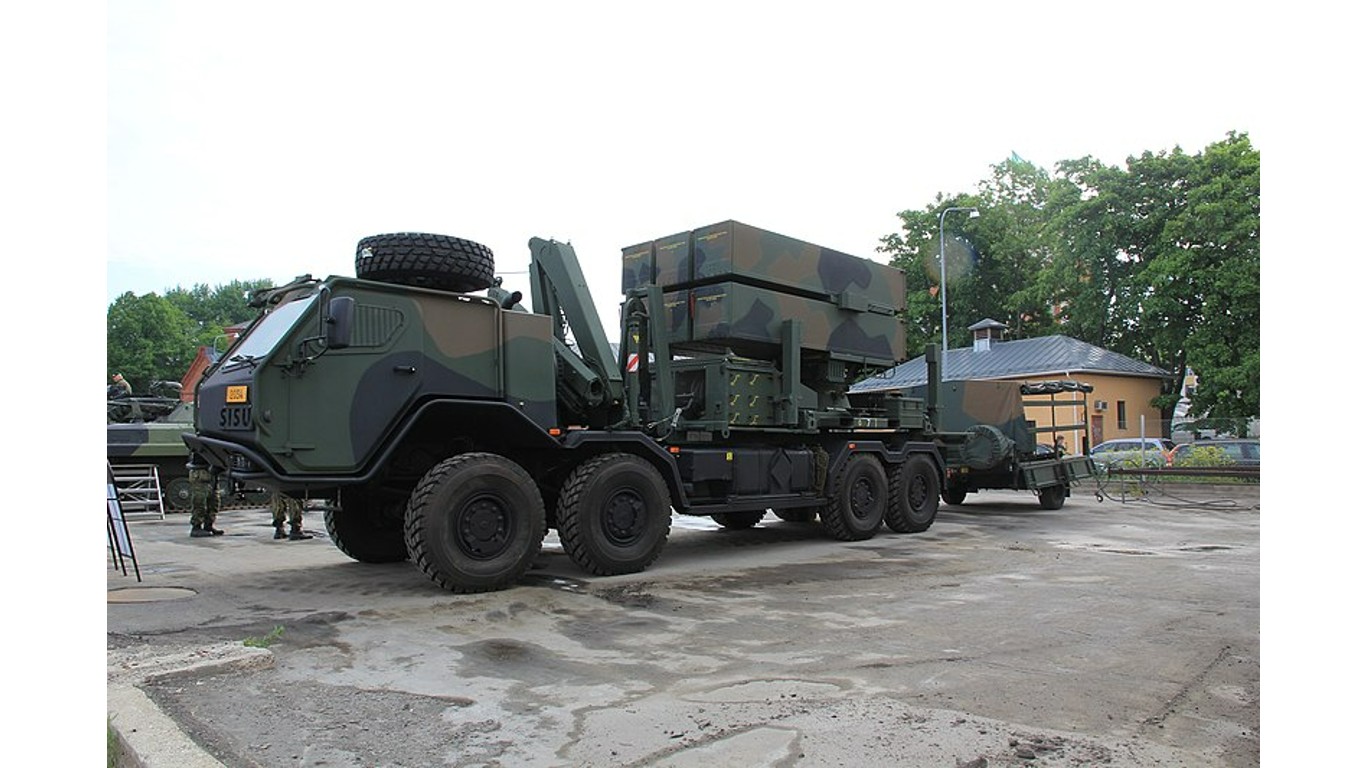
2. Anti-drone systems
National Advanced Surface-to-Air Missile Systems, or NASAMS, are medium-range air defense weapons. They are equipped with Sentinel radar systems and Advanced Medium Range Air-to-Air Missiles. The government has committed to delivering eight NASAMS to Ukraine.
NASAMS are capable of destroying aircraft – including drones – as well as incoming cruise missiles. Currently, a dozen countries use NASAMS, including Norway, Finland, Spain, Netherlands, Oman, and Lithuania. NASAMS have also been integrated into the U.S. National Capital Region’s air defense strategy for over a decade.
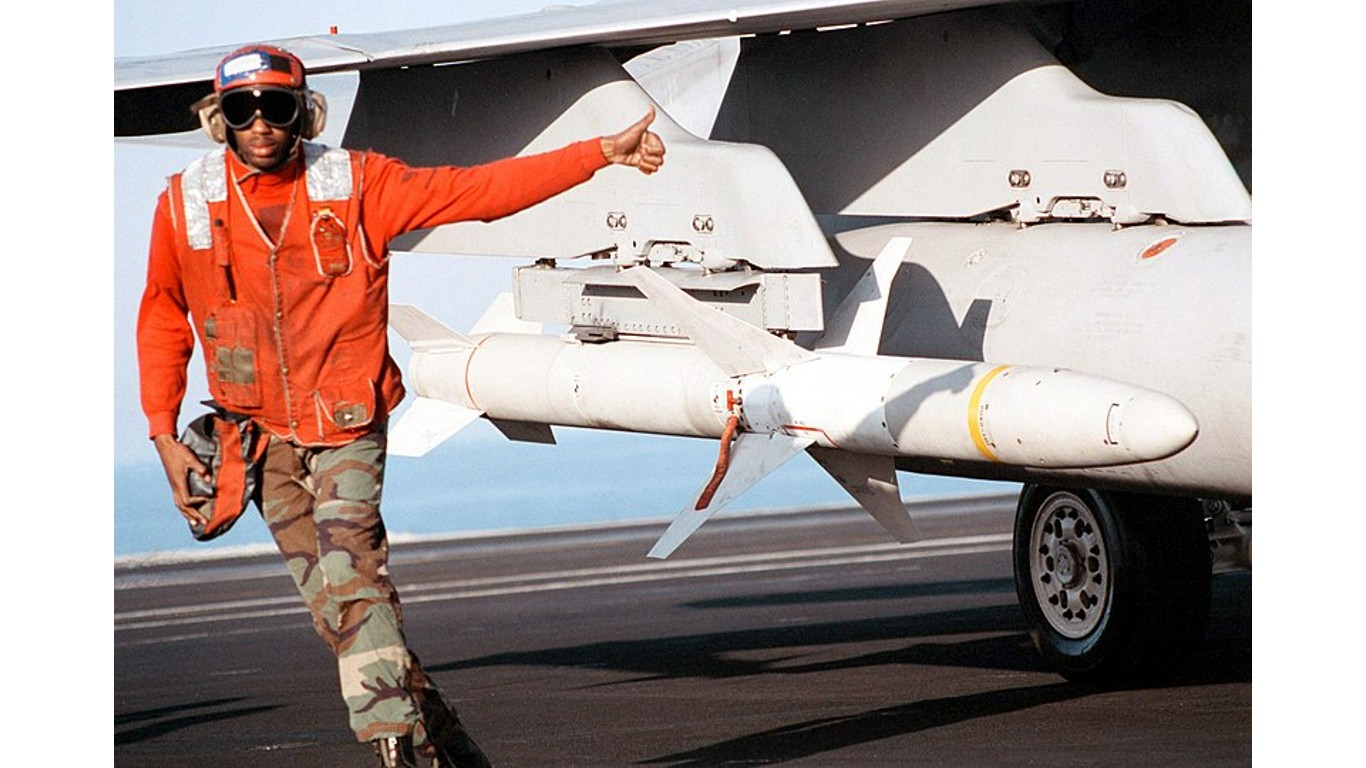
3. Anti-radar missiles
Ukraine is receiving an unspecified number of high-speed anti-radiation missiles, or HARMs, from the U.S. government. AGM-88 HARMs are supersonic surface-to-air missiles designed to take out radar-equipped air defense systems.
AGM-88s are manufactured by Raytheon, weigh about 800 pounds, and cost about $200,000 each. First deployed in 1984, they are used on F-16s in the U.S. Air Force.
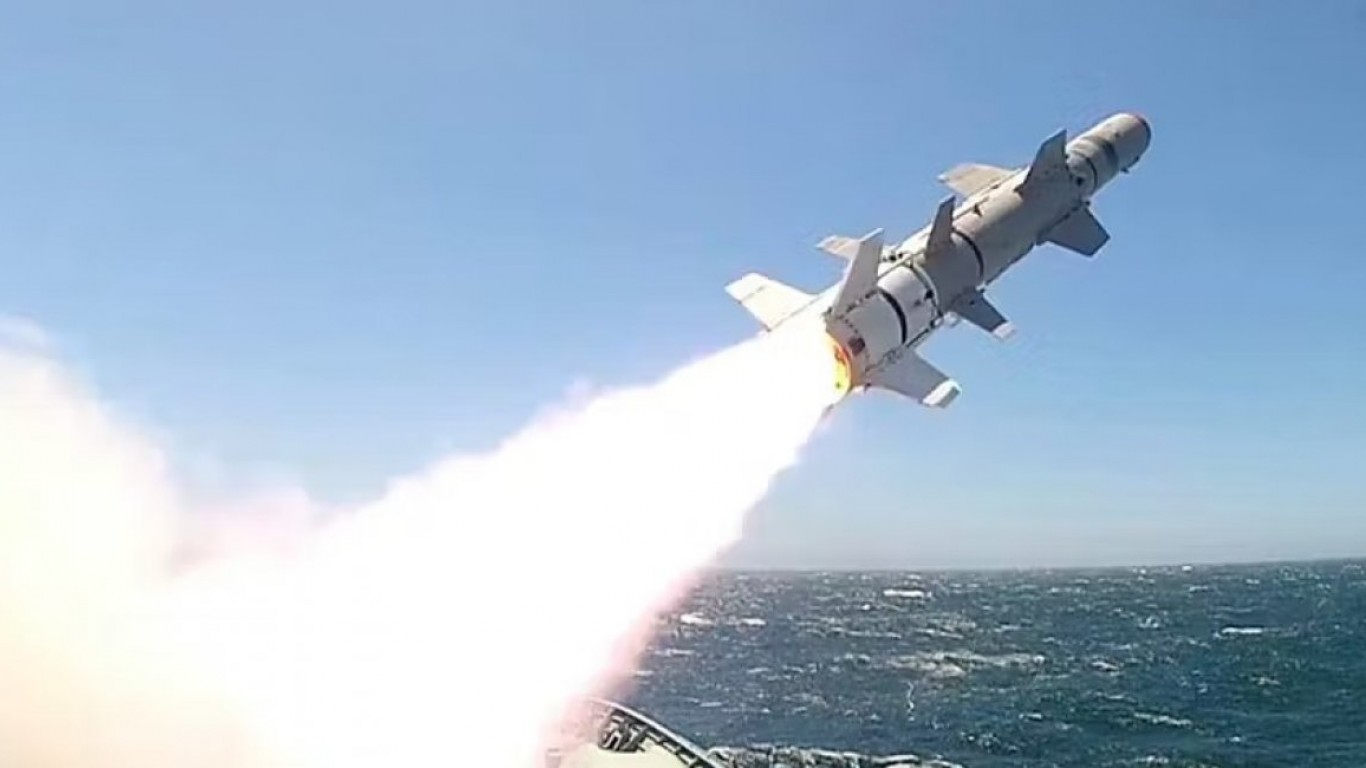
4. Anti-ship missiles
The U.S. is also supplying Ukraine with naval defense weapons – specifically two Harpoon Coastal Defense Systems. These missiles are vehicle mounted and designed to take out warships. Denmark has already provided Ukrainian forces with harpoon missiles, which they have used for coastal defense along the Black Sea.
Earlier, the DOD approved the sale of 100 RGM-84L-4 Harpoon Systems for an estimated $2.37 billion to Taiwan.
[in-text-ad-2]

5. Anti-tank missiles
Tanks have been crucial to Russia in its invasion of Ukraine. To aid in Ukraine’s military forces push back Russian tanks, the U.S. has committed to sending 1,500 tube-launched, optically-tracked, wire-guided missiles, which are typically used as anti-tank weapons. These missiles weigh about 50 pounds and can be deployed on a range of military vehicles, including Humvees.
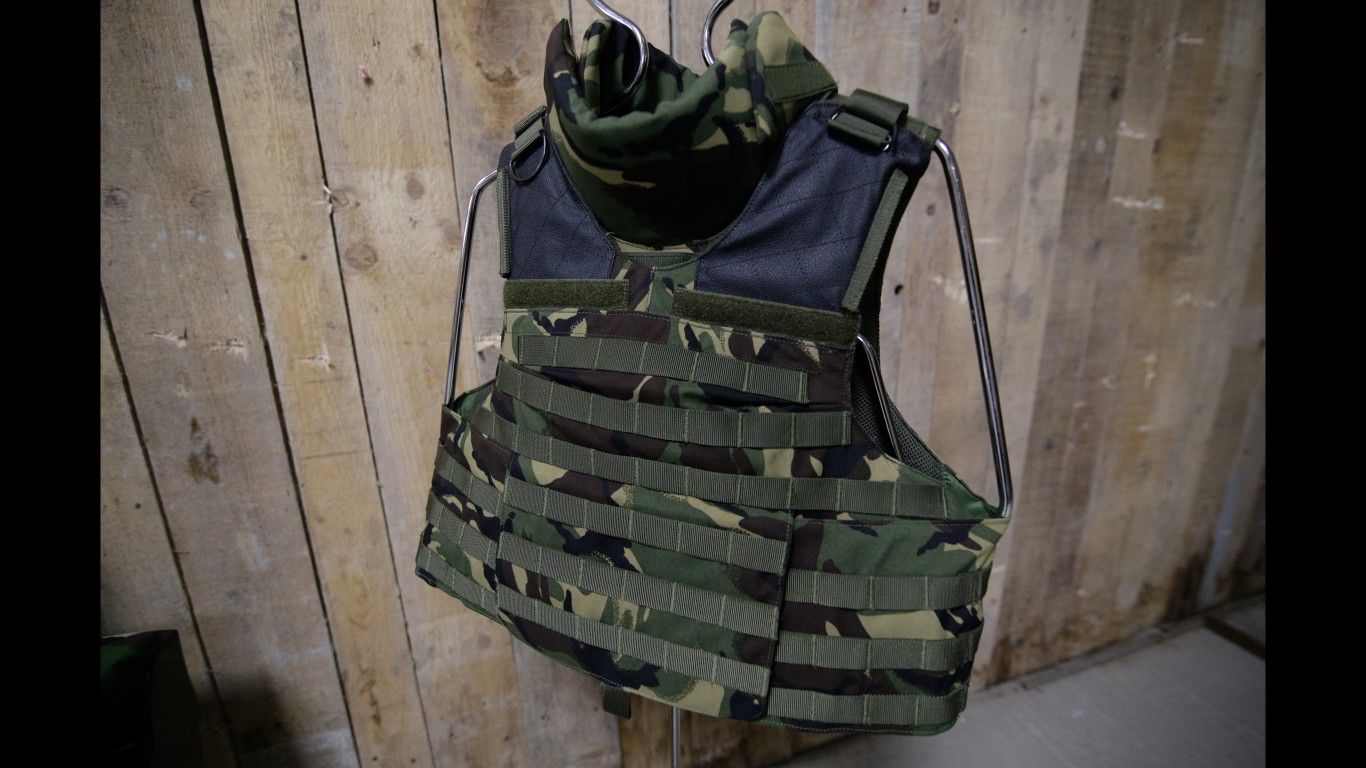
6. Body armor and other protective equipment
To improve safety among Ukrainian fighters, the U.S. has committed to sending over 75,000 sets of body armor and helmets to the country’s fighting effort. Notably, in light of recent threats regarding the use of tactical nuclear weapons from Moscow, the U.S. is also sending nuclear protective equipment, in addition to protective gear for chemical, biological, and radiological weapons.
[in-text-ad]

7. Combat vehicles
For moving personnel and material around the battlefield, the U.S. is sending Ukraine several types of military vehicles. These include 40 MaxxPro Mine Resistant Ambush Protected Vehicles with mine rollers, to aid in clearing mines. In addition, the U.S. will supply 200 M113 armored personnel carriers and hundreds of armored high mobility multipurpose wheeled vehicles, commonly known as Humvees.
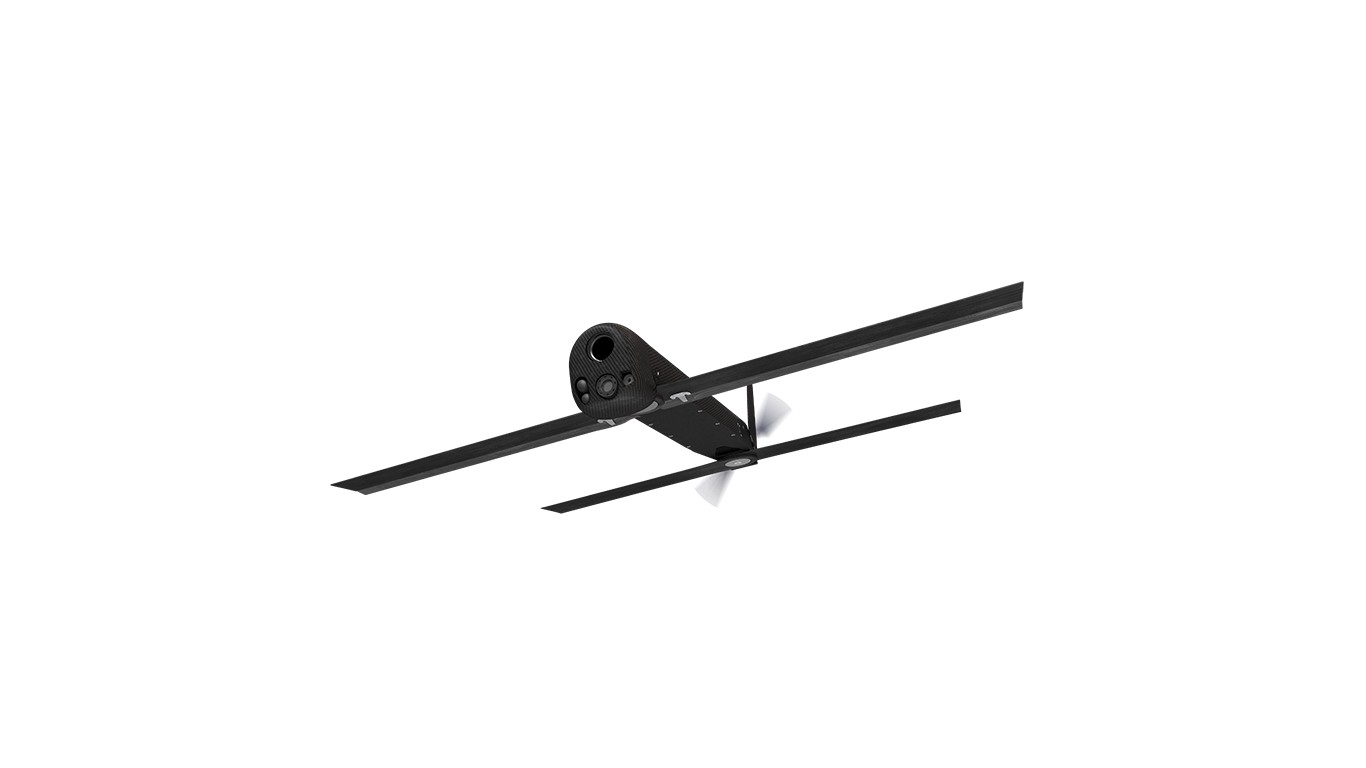
8. Unmanned Aerial Drones
Ukraine will receive over 700 Switchblade Tactical Unmanned Aerial Systems, or drones. The Switchblade drone, manufactured by AeroVironment, is effectively a flying robot outfitted with a camera, a GPS system, and explosives. Like many other weapons systems the U.S. is supplying to Ukrainian fighters, the Switchblade is highly portable, some are even small and light enough to fit into a backpack and are rapidly deployable.
The DOD has also obligated approximately 700 Phoenix Ghost Tactical Unmanned Aerial Systems. The Phoenix Ghost is a similar weapon to the Switchblade drone, but brand new and specifically tailored for situations similar to that faced by Ukranians fighting in the Donbas region.
The U.S. will also supply an unspecified number of Puma drones, a type of surveillance drone, as well as 15 ScanEagle reconnaissance drones.

9. Electronic jamming technology
The U.S. is sending Ukraine electronic jamming equipment that can be used for detecting and locating Russian communication signals and for radiating signals that can jam and deceive Russian communications and radar.
[in-text-ad-2]
10. Explosives
The M18A1 Claymores Ukraine is receiving from the U.S. are command detonated mines that can be effective against personnel as well as some vehicles. When detonated, the weapon explodes, releasing about 700 steel balls in a predetermined direction, similar to a shotgun, with an effective range of about 100 meters.
In addition, the U.S. is supplying Ukraine with C-4 explosives and demolition munitions for clearing obstacles and battlefield obstructions.
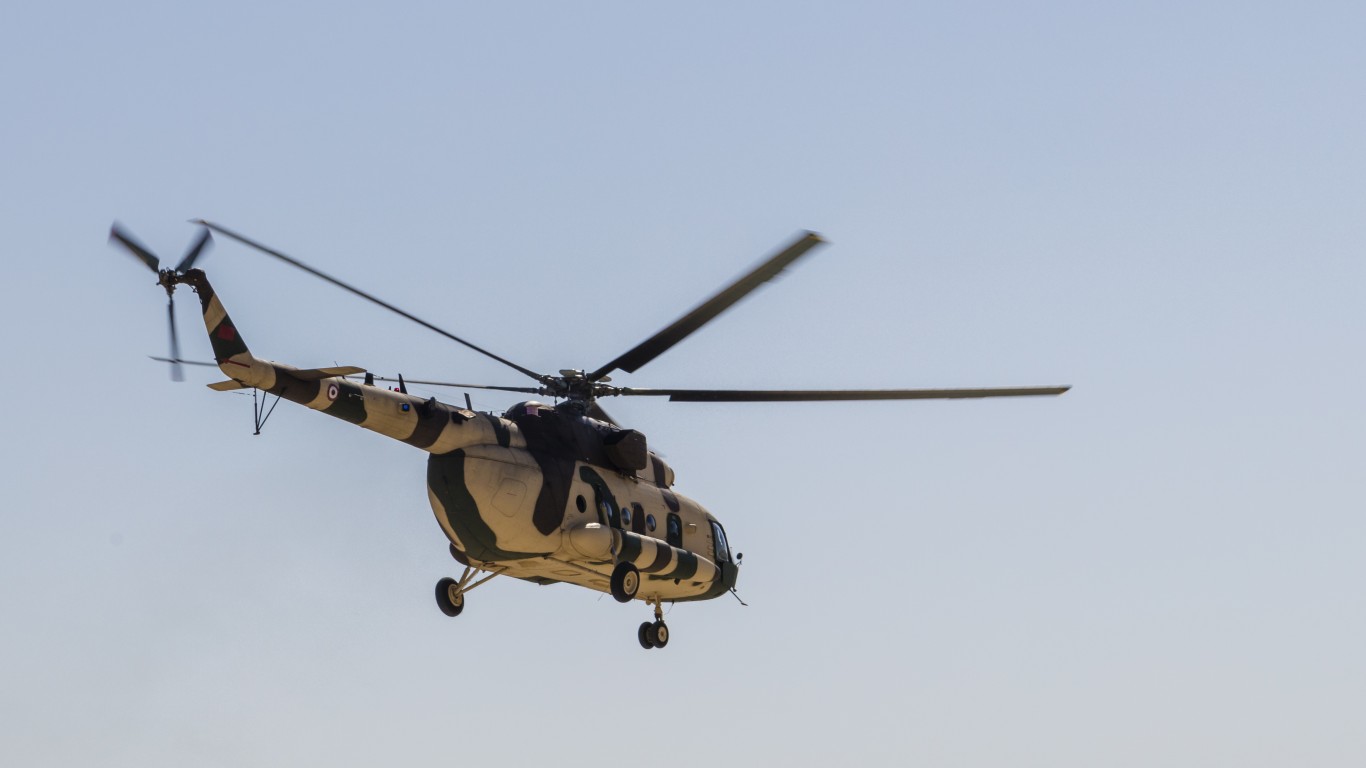
11. Helicopters
Mi-17s are medium transport helicopters designed for moving personnel and cargo. These helicopters require a crew of three and can carry up 24 paratroopers but can also be outfitted with munitions and serve as a gunship. The U.S. is sending 20 Mi-17s to Ukraine. Ironically, these helicopters were manufactured by a Russian state-owned arms contractor. The Pentagon originally procured the helicopters for use in Afghanistan, selecting them due to their low cost and the familiarity Afghan pilots had with them.
The Russian military uses the same helicopter, though it is known in Russia as the Mi-8M.
[in-text-ad]
12. High Mobility Artillery Rocket System
The High Mobility Artillery Rocket System, or HIMARS, is a launching system, mounted on a wheeled chassis, capable of launching two different types of rockets. The system has an effective range of over 70 kilometers and a relatively low risk of inflicting collateral damage.
The U.S. is supplying Ukraine with 34 HIMARS systems along with munitions.
13. Howitzers
Much of the weaponry the U.S. is supplying to Ukraine includes technologically advanced systems like drones and homing missiles. The 155mm Howitzer field artillery gun, on the other hand, operates in much the same way as weaponry considered cutting edge a century ago. Though the weapon’s payload can often be GPS controlled, the Howitzer is effectively an artillery cannon. These weapons require a small crew to operate them and have an effective range of up to 15 miles.
The U.S. has committed to supplying Ukraine with 126 Howitzers and up to 806,000 155mm artillery rounds and 2,000 precision-guided artillery rounds – in addition to 20 105mm Howitzers and 180,000 105mm artillery rounds.

14. Medical supplies
Medical equipment and supplies, including first aid kits, bandages, and monitors, are among the items the U.S. has pledged expressly to help save Ukrainian lives during Russia’s ongoing invasion. Other countries, as well as organizations and individuals are also donating medical supplies and first aid kits to Ukraine’s fighting effort.
[in-text-ad-2]
15. Mortars
The 120mm mortar systems used by the U.S. military come in mounted and unmounted variants. They are generally used for indirect fire support for combat operations. The U.S. has committed to sending Ukraine 20 120mm mortar systems along with 85,000 mortar rounds.
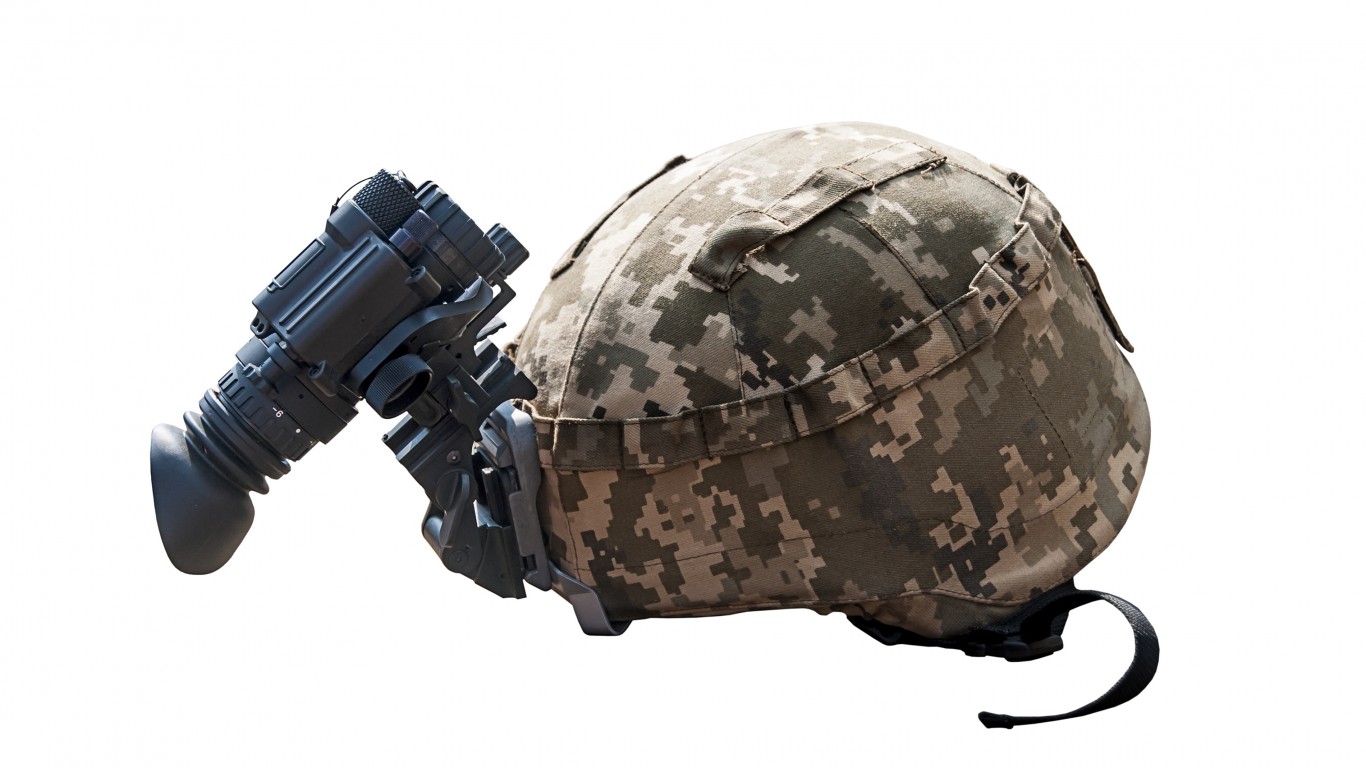
16. Optics and night vision technology
In addition to advanced weapons and communication systems, the U.S. is sending Ukrainian fighters thousands of night vision devices, surveillance systems, thermal imagery systems, optics, and laser rangefinders. These tools can empower individual soldiers with greater capabilities pertaining to information gathering and battle fighting.
[in-text-ad]

17. Radar
Radar technology can be essential for conducting military operations – whether on the land or sea or in the air. So far, the U.S. has pledged over 50 counter-artillery radars, four counter-mortar radar systems, 20 multi-mission radars, and 10 air surveillance radars.
18. Laser-guided rocket systems
The U.S. has pledged an indefinite number of laser-guided rocket systems to Ukraine. This will include $22.6 million-worth of the Advanced Precision Kill Weapon System II, or APKWS II, which is a 70mm rocket guided by a BAE Systems laser guidance kit. Precision guidance allows the rockets to hit lightly armored targets in restricted areas while minimizing collateral damage.
Though it remains to be seen which platform the Ukrainians will use to fire the rockets, experts speculate that Ukraine may be able to outfit their Turkish-made Bayraktar TB2 drones or the 20 Mi-17 U.S.-provided helicopters with the rockets.

19. Satellite and communication technology
Commercial satellite imagery is one of several intelligence sharing initiatives the U.S. facilitated to aid Ukraine’s fight against the Russian invasion. Through a partnership with over 100 companies, including Maxar, BlackSky, and Planet, hundreds of commercial satellites are providing Ukraine and NATO nations with images of Russian troop movement and battlefield organization.
[in-text-ad-2]
20. Ships
In addition to a wide range of vehicles and weapons for ground combat, the U.S. is also supplying Ukraine with naval weaponry. These weapons and ships include an unspecified number of unmanned coastal defense vessels and 18 coastal and riverine patrol boats.
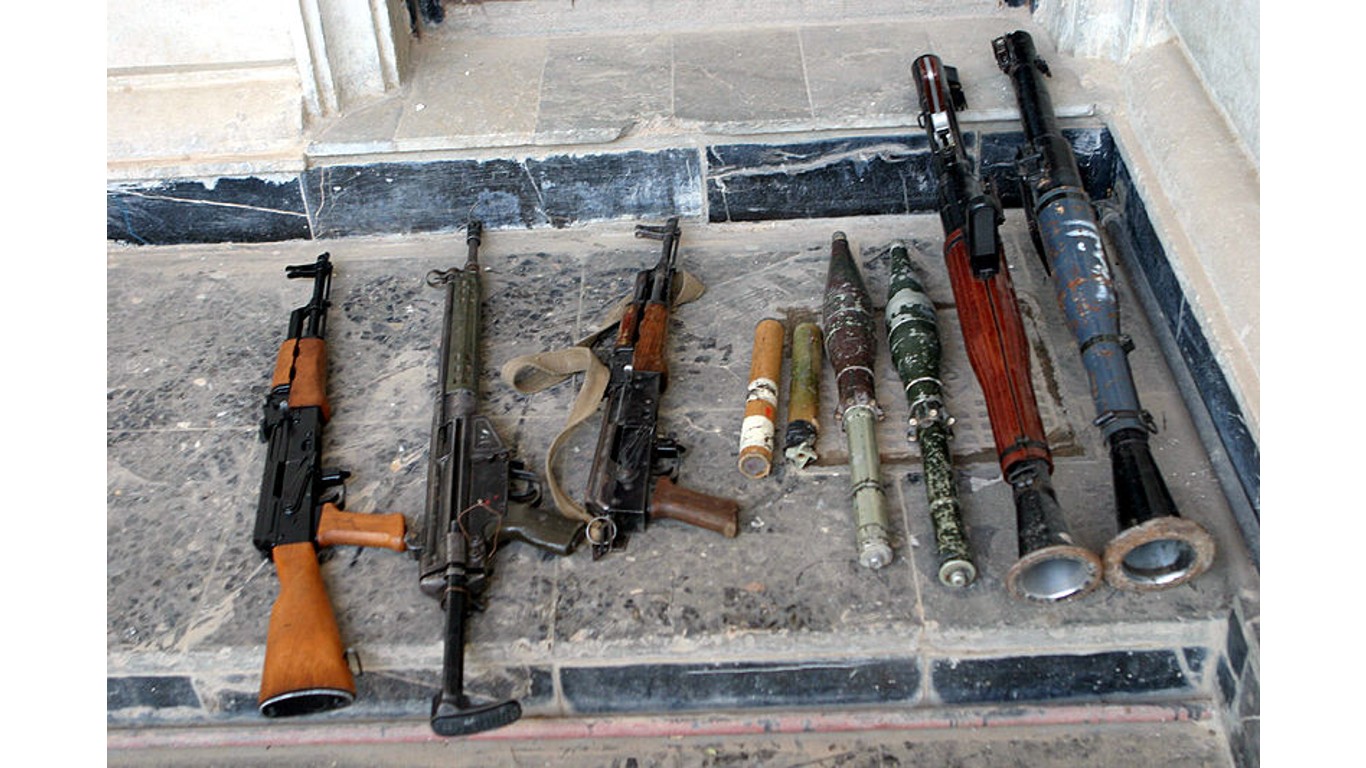
21. Small arms
Along with transport vehicles, artillery, and technologically advanced weapons systems, the U.S. is also providing Ukraine with thousands of small arms for Ukrainian fighters to carry. These include thousands of rifles, pistols, shotguns, machine guns, and grenade launchers – plus over 60 million rounds of ammunition.
[in-text-ad]
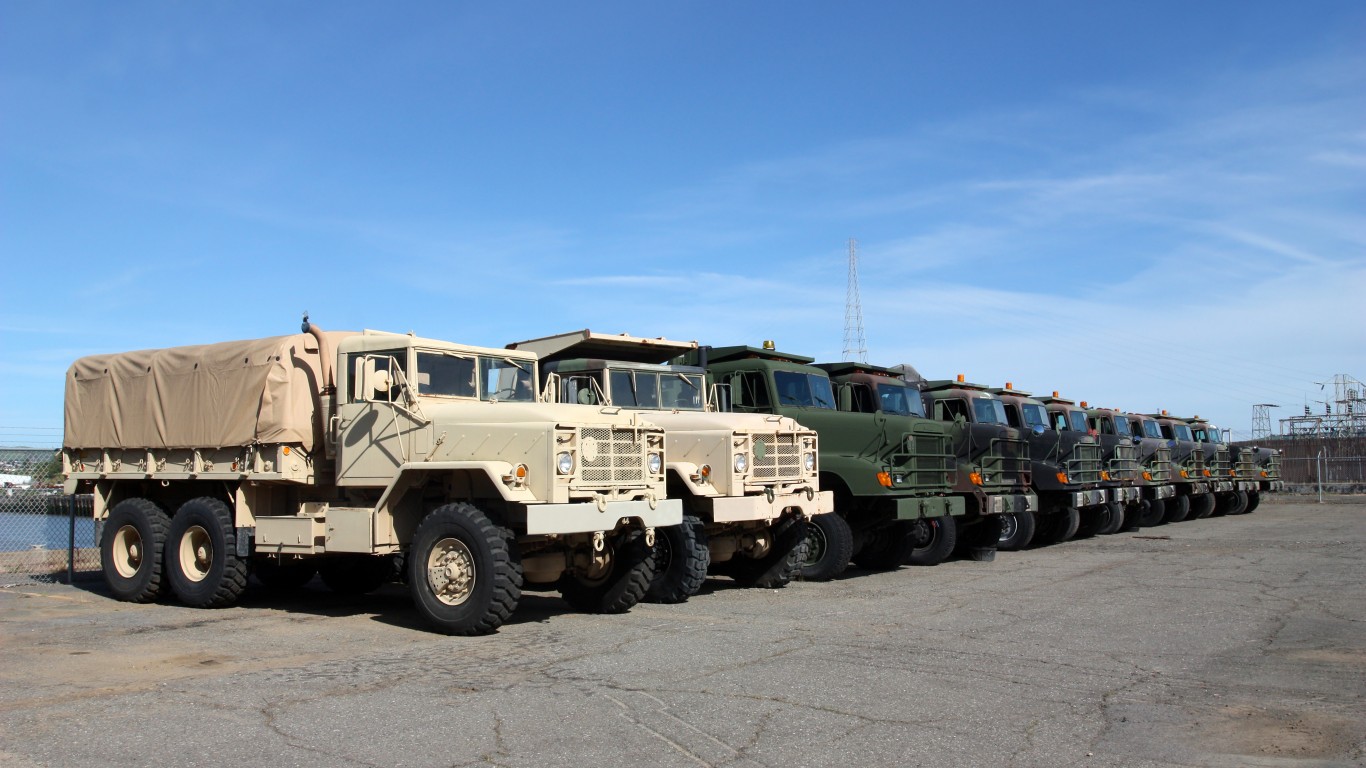
22. Trucks and other utility vehicles
The U.S. has committed to sending a range of ground vehicles to Ukraine, supplementing combat vehicles and serving a variety of special purposes. The trucks and utility vehicles the U.S. will supply include 276 tactical vehicles to tow weapons and material, 22 tactical vehicles to recover equipment, 100 armored medical treatment vehicles, and 44 trucks and 88 trailers to transport heavy equipment.
Are you ahead, or behind on retirement? For families with more than $500,000 saved for retirement, finding a financial advisor who puts your interest first can be the difference, and today it’s easier than ever. SmartAsset’s free tool matches you with up to three fiduciary financial advisors who serve your area in minutes. Each advisor has been carefully vetted and must act in your best interests. Start your search now.
If you’ve saved and built a substantial nest egg for you and your family, don’t delay; get started right here and help your retirement dreams become a retirement reality.
Thank you for reading! Have some feedback for us?
Contact the 24/7 Wall St. editorial team.